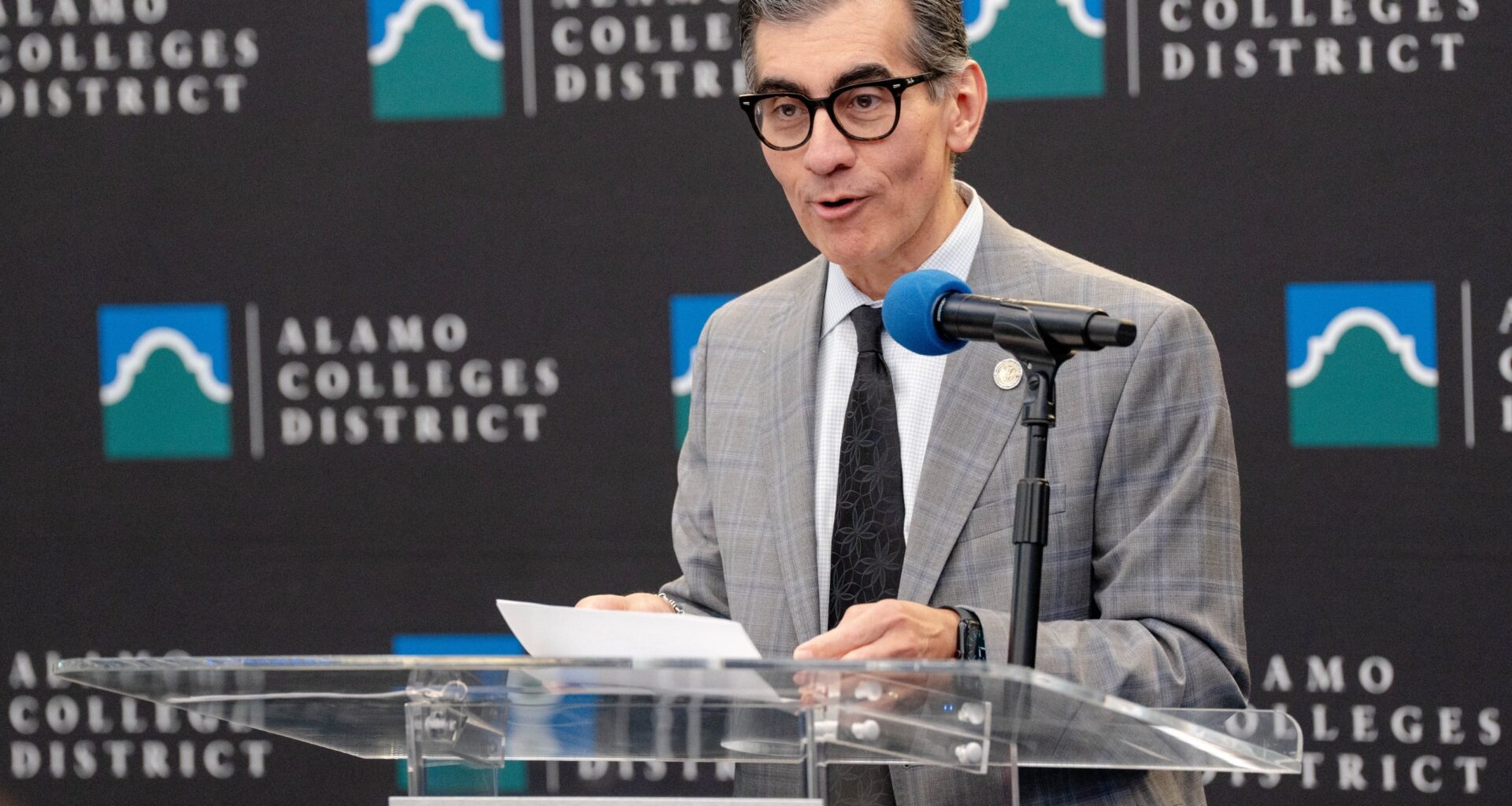More than 30,000 students have attended Alamo Colleges District colleges tuition-free since the launch of the Alamo Promise program in 2019. And as it completes its fifth year, district officials are assessing the success of these student cohorts and how to better support incoming classes.
“I think this really presents an opportunity for us not only to celebrate, but to reflect and then strategize,” said Stephanie Vasquez, Alamo Promise chief program officer. “And we’re right in the middle of that process.”
This fall, Alamo Colleges welcomed the sixth and largest incoming class of Alamo Promise Scholars with more than 7,300 freshman students across the five colleges — San Antonio College, St. Philip’s College, Northwest Vista College, Northeast Lakeview College and Palo Alto College.
Alamo Promise covers tuition and fees that are not covered by other sources of financial aid, ensuring that qualifying students attend any of the five community colleges for free for up to three consecutive years.
This is one of 450 similar local and state promise programs across the country, according to nonpartisan and nonprofit organization College Promise. These programs celebrated 10 years of existence with a small conference at Palo Alto College last week when they awarded Alamo Promise with a National Impact Award.
While no promise program is the same, these are meant to increase access to higher education for some of the most underserved populations by removing, or lessening, the cost barrier through scholarships.
At Alamo Colleges, the program started by focusing on students graduating from schools with historically low college-enrollment rates, and those located in high poverty areas.
In 2023, Alamo Promise expanded to grant access to every high school senior in Bexar County who enrolls in any of the five colleges immediately after graduation.
Over the last four years, Alamo Colleges has allocated more than $16 million to the program. And this year the colleges set aside a $5 million budget for Alamo Promise.
“We’ve really tried to make sure that we have the guiding principle of inclusivity,” Vasquez said. “We really see that our Alamo Promise scholars are reflective of the community and that’s been our intent.”
These five years of data provided the opportunity to conduct an analysis of the program, Vasquez said, a process that is currently ongoing. But even if the results aren’t in yet, there are some key metrics that they now know could make or break a student’s college experience.
Being enrolled through Alamo Promise increases the chances of students staying enrolled in the program of their choice by about 30%, college officials found. And retention of first-year students is one of the main determinants of their success.
College officials found that students who complete and remain enrolled after their first year are eight times more likely to complete their degree or certificate program.
Overall retention rates of Alamo Promise students are slightly lower than their Alamo Colleges peers, according to 2023-24 data provided by the college. But both groups showed similar third and fourth year graduation rates.
“We’ve been really successful in our access and enrollment,” Vasquez said. “But we are shifting — not only with Alamo Promise but with the Alamo Colleges District — to see how we can best support students in their persistence, their completion and their post-secondary outcomes.”
A shift means better data tracking of these key performance indicators, and adjusting support systems to improve outcomes, Vasquez said. As an institution, she said the goal is to always adapt and adjust based on student success.
Alamo Promise students tend to attend college on a full-time basis at higher rates than non-promise students, Vasquez said, and because of the nature of the program, these tend to be younger students.
The program has also prompted other public universities, including the University of Texas at San Antonio and Texas A&M University-San Antonio, to create their own promise programs, efforts that led to an increase in student enrollment.
Even if there is talk about possible adjustments to increase the success of these students, Vasquez said there are already systems in place that are meant to support students along the way. These include the assignment of an academic advisor who aside from helping students start their journey, will touch base with them at the 15-, 35-, and 45-credit hour mark.
But that doesn’t mean that adjustments aren’t needed, she said, and this internal assessment will be one way of making sure that the next five years are equally or more successful, while making sure that access is at the center of the program.
“We’re making sure we are keeping the spirit of the program and the intent to provide service to students and access and continued support, rather than getting caught up in the letter of program requirements,” Vasquez said.

